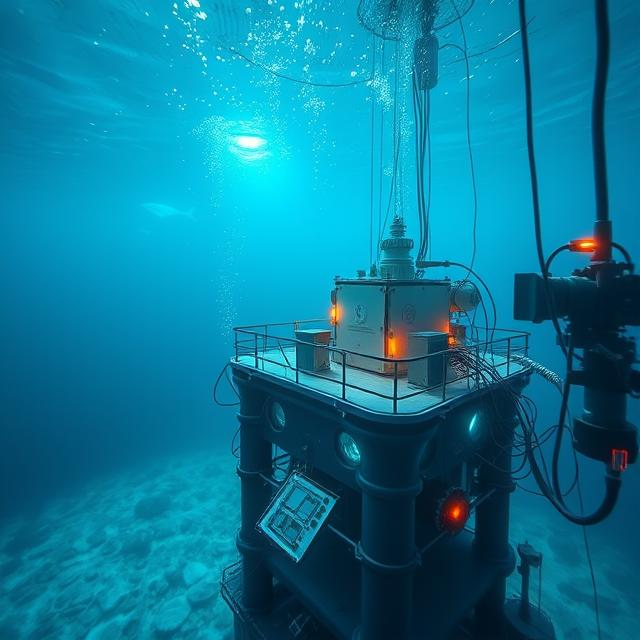Underwater internet is a revolutionary technology designed to allow real-time communication beneath the oceUnderwater internet is a new technology that’s changing how we talk under the sea. It allows instant data sharing underwater, which has an impact on areas like ocean research watching the environment, and exploring the deep sea. Let’s take a closer look at how this tech works and the cool things it can do.
How Does Underwater Internet Work?
Normal internet uses electromagnetic waves to send data, but these waves don’t move well through water. Underwater internet fixes this problem by using other types of waves that can travel better in water. These include:
- Sound Waves (Acoustic Waves): These work well for talking over long distances underwater, but they’re not the fastest.
- Light Waves: These are quick and great for short distances, but they don’t work as well if the water isn’t clear.
- Radio Waves (RF Waves): These do the job in shallow water because they can’t go deep underwater.
When we use these waves together underwater internet lets devices hook up to stations on the surface and share info right away even when they’re miles under the sea.
Main Uses of Underwater Internet
- Monitoring Marine Environments Underwater internet allows scientists to collect data on ocean conditions like temperature, salinity, and pollution non-stop. This ongoing tracking helps researchers address environmental problems like climate change and protect marine habitats.
- Exploring the Ocean Depths The power to send data from operated vehicles (ROVs) right away lets scientists and explorers study the deep sea and do underwater archaeology. This ability brings hidden underwater marvels to the surface to examine.
- Disaster Prevention People can also use underwater internet to spot seismic activity such as underwater earthquakes giving early warnings about tsunamis. This tech plays a key role in saving lives in coastal areas by providing crucial info before disasters hit.
- Advancing Aquaculture Underwater internet has a big impact on fish farms. It lets farmers watch water quality, fish health, and feeding times in real time. This leads to more sustainable and productive fish farming.
- Strengthening Underwater Security The military and defense sectors use underwater internet to talk better with submarines and underwater drones. This boosts operations by providing smooth connections in key defense zones.
Advantages of Underwater Internet
- Instant Data Sharing: Access to real-time data helps researchers and operators make faster better-informed decisions.
- Seamless Connectivity: It closes the communication gap between underwater devices and surface stations creating ongoing links.
- Reduced Costs: Monitoring from afar cuts down the need for pricey manual data collection methods making operations more cost-effective.
Challenges Facing Underwater Internet
While this technology shows great promise, it does have its hurdles:
- Signal Weakness: Sound and light waves become weaker as they move through water, which can affect how well things communicate over long distances.
- Energy Limitations: Powering devices underwater for long times, needs clever battery tech.
- High Setup Costs: Setting up and keeping underwater communication systems running costs a lot, which can stop many from using them.
The Future of Underwater Internet
The future of underwater internet looks bright. As tech gets better, it will help build self-driving underwater vehicles (AUVs) run ocean-based clean energy systems, and even make underwater data centers possible. These new ideas are creating fresh ways to explore, learn about, and protect our oceans.
